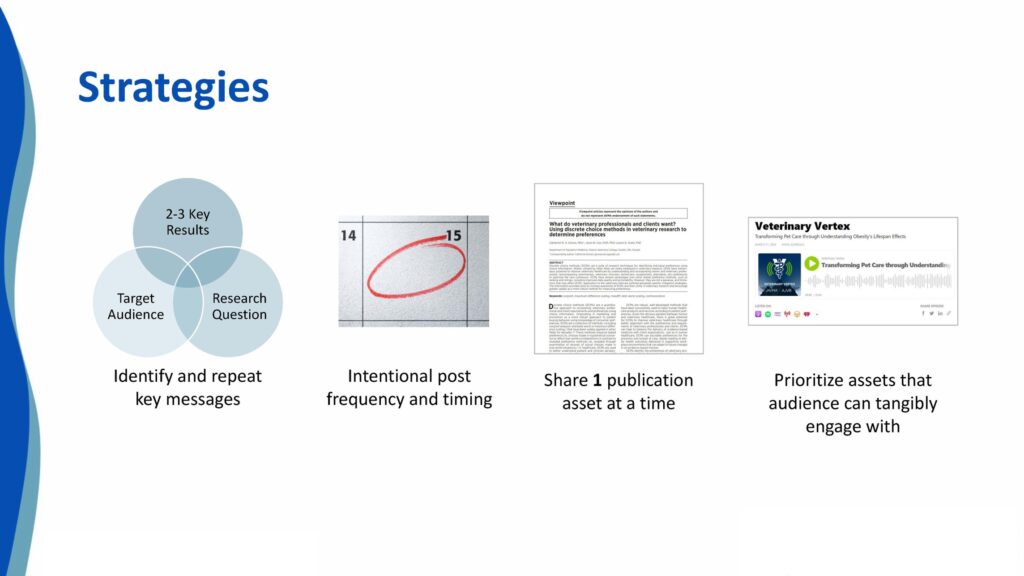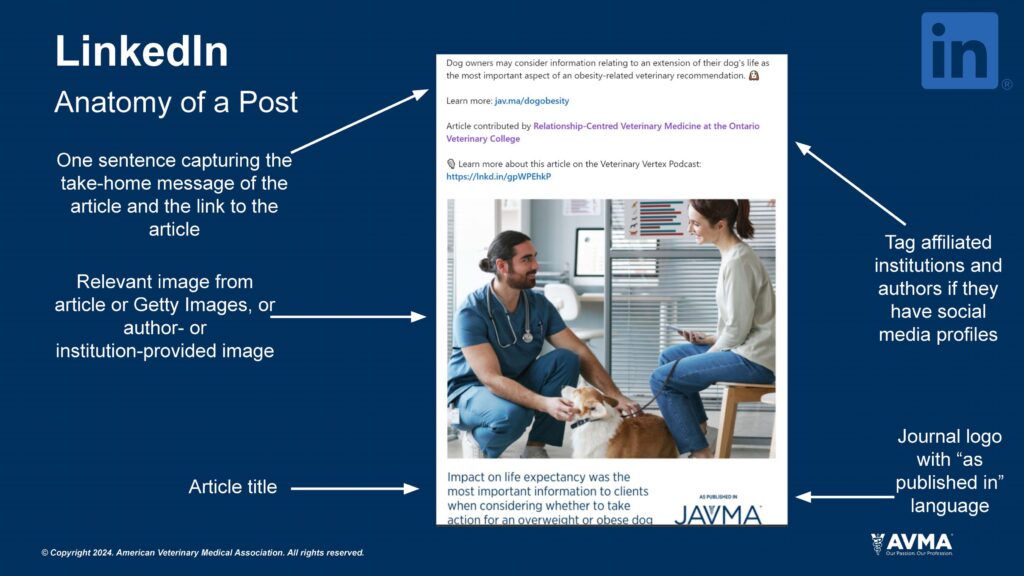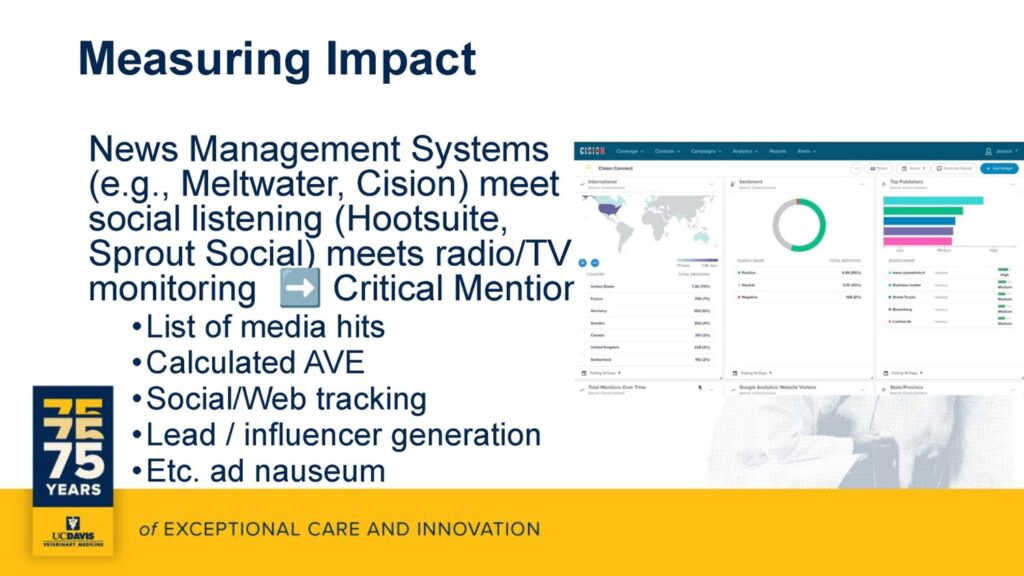MODERATOR:
Dr Sarah Wright
American Veterinary Medical Association
SPEAKERS:
Dr Sarah Wright
Michelle Herbert
Digital Science
Tom Hinds
University of California, Davis – School of Veterinary Medicine
Dr Kat Sutherland
Ontario Veterinary College, University of Guelph
REPORTER:
Denise Kuo
Origin Editorial
Dr Sarah Wright set the stage by emphasizing the importance—even power—of social media in scholarly communication and then introduced each speaker in turn. Offering different perspectives through the lens of an author, an editor, and an institution, Dr Wright, Tom Hinds, and Dr Kat Sutherland discussed strategies and experiences they each encountered while working to attract article attention. Focusing on the measurement of article attention, Michelle Herbert described how Digital Science’s Altmetric badge and tools support all participants seeking to measure article attention.
Researcher Dr Kat Sutherland shared her experience as a member of an author group that intentionally laid out a strategy to share and amplify their work using LinkedIn (Figure 1).

Dr Sutherland’s group communicates their work on LinkedIn using 3 different structured formats depending on the content type to maximize consistency. The research team typically releases a single post per week and always hyperlinks to the content that is hosted on their team website. The team is also careful to include just 1 asset (e.g., 1 article or resource) in each post, and they do NOT repost their own content. Since each piece of content will only be shared through 1 post, the team makes sure to tag all relevant contributors including collaborators, author institutions, and funders.
Varied content takes the form of research, speaker highlights, team member highlights, and resources such as a podcast or webinar. Since the team does not repeat posts, to enhance audience engagement, they create infographics that are centered around key research findings and relevant resources. Each infographic is unique and posted once but may include findings and resources that were previously shared through a different type of post.
As an Associate Editor for the Journal of the American Veterinary Medical Association (JAVMA) and the American Journal of Veterinary Research (AJVR), Dr Sarah Wright strives to inspire author loyalty through the journals’ social media strategy. Similarly to the author’s perspective presented by Dr Sutherland, structured post formats are important, but for JAVMA and AJVR, the selection of format is determined by the intended audience and social media platform, which may be Facebook, X, Instagram, LinkedIn, or a podcast. Also, it is common to repeat content across platforms, but each post is tailored in structure and message based on the platform’s audience (Figure 2).

At the University of California, Davis – School of Veterinary Medicine, Tom Hinds and team work to create an atmosphere at the institution that encourages researchers to engage in media promotion, both through news outlets and social media platforms. This is accomplished by 1) members of the leadership team setting an example by personally engaging in media activities, 2) providing media training to researchers, and 3) regularly celebrating results of media engagement. In addition to encouraging researchers to engage with media, the team works to cultivate relationships with many different media outlets with a goal of drawing attention not only to recent studies conducted by researchers at UC Davis – School of Veterinary Medicine, but also other content from the school. The team receives monthly reports that detail the attention received by the studies through various outlets, including social media, but the amount of information can be overwhelming and difficult to digest as they seek to measure the impact of the team’s hard work (Figure 3).

The struggles that Hinds and team have encountered in understanding how attention is measured was a perfect lead-in to the final presentation in the session by Michelle Herbert from Digital Science. Herbert emphasized the importance of persistent identifiers such as a DOI or PubMed ID for the tools developed by Digital Science to produce an Altmetric badge. The inclusion of a persistent identifier as the URL hyperlink in social posts on X, Instagram, Facebook, etc., ensures the post is counted when the Altmetric badge is updated. While Herbert could not guarantee it will happen in 2024, her confirmation that Digital Science is interested in having a conversation with LinkedIn to include posts on that platform in the Altmetric badge and Explorer in the future was warmly received by everyone in the room. In the meantime, LinkedIn does provide their own metrics on the platform that can be utilized by anyone to measure the attention of their own account and activity on the platform.
As the session wrapped up, the entire panel agreed that social media can be effective for every organization and journal, but it is important to find out where the target audience is for your research group, department, university, or journal and then utilize the best platform or channel to reach that audience. One final piece of advice that the speaker panel endorsed was that each platform does a good job of recommending the best day and time to post content on the platform; following the advice of the algorithm will result in good engagement with the post. It really works!
